NEI Launches New Funding Mechanism to “Innovate Together”
Intramural Grants Help Awardees Step Outside Comfort Zones, Gain Career-building Experience
BY KATHRYN DEMOTT, NEI
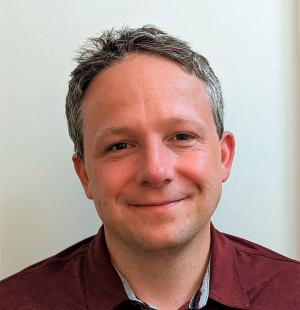
CREDIT: NEI
John Ball
John Ball, a staff scientist in the NEI Retinal Neurophysiology Section, has long wanted to visualize the functional circuitry of individual cone photoreceptors, the color-sensing neurons in the eye. Now, thanks to advances in artificial intelligence (AI) and a new NEI intramural grant program, he will get his chance.
Seven projects funded by the “Innovate Together” program will enable NEI intramural postdoctoral fellows and staff scientists to explore new tools and techniques. The funding program also provides career-building experience in grant proposal writing and budget management, independent of involvement from primary investigators. The seven grants awarded in this first round totaled $350,000.
“AI, big data analysis, high-throughput screening, and other methods blossomed after most awardees finished graduate school,” said NEI Scientific Director Kapil Bharti. This program encourages NEI intramural researchers “to get outside their comfort zone,” Bharti said. One awardee, accustomed to working with animal models, will be working with organoids, and a group that usually works with organoids is collaborating with clinicians using AI to combine clinical and basic science data. Another project is developing tools that the entire institute will be able to use.

CREDIT: NEI
Full fluorescent image background (a) is representative of the size and scope of the 3D serial electron microscopy dataset Ball aspires to acquire, and the boxed region (c) is the approximate size of the small dataset he acquired a decade ago and which took hundreds of hours of manual labor to segment; (b) is a diagram showing the process of acquiring the 3D image data from a sample.
With his grant, Ball will use cloud-based AI to segment and digitally reconstruct the structure of neurons within a very large 3D electron microscopy image. The data will come from a block of retina from the thirteen-lined ground squirrel (Ictidomys tridecemlineatus), a model for investigating cone-based eye diseases.
“One of the challenges in neuroscience is that everything is so tightly packed together and interacting in complicated ways,” said Ball. “It is difficult to tell what you are looking at. The 3D reconstruction of neuronal wiring from serial electron microscopy is a technique that has been around for decades, but automation and computers have increased the capability to explore these huge wiring diagrams to figure things out.”
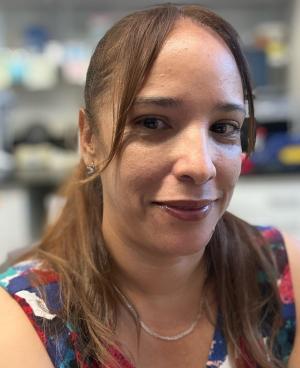
CREDIT: NEI
Gleysin Cabrera-Herrera
Gleysin Cabrera-Herrera, a postdoctoral fellow in the NEI Laboratory of Retinal Cell and Molecular Biology, specializes in the characterization of carbohydrates and proteins using mass spectrometry, but she wants to learn how to interpret genomics data. The grant supports her search for biomarkers of early age-related macular degeneration (AMD) by interpreting findings from AMD population genome-wide association studies and corresponding quantitative proteomics data.
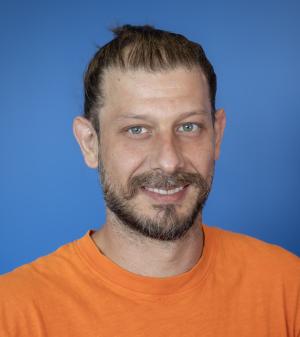
CREDIT: NEI
Andrea Barabino
For Andrea Barabino, a postdoc in the Ophthalmic Genetics and Visual Functions Branch, the NEI IRP grant will give him the chance to use novel approaches to study how two key retinal cells work together. The back of the eye is like a camera with sensors (photoreceptors) that capture light to make images and batteries (retinal pigment epithelial [RPE] cells) to provide energy. In eye diseases like AMD, these two cell types stop working well together, leading to vision loss.
“Scientists have tried to study these cells together in the lab, but it has been challenging because these cells don’t stick together well outside the body,” Barabino said.
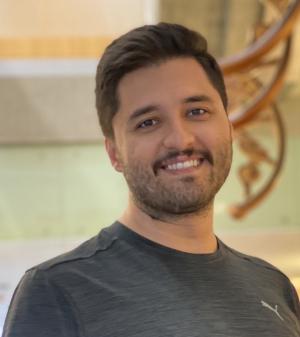
CREDIT: NEI
Ali Otadi
Barabino and Ali Otadi, a postbaccalaureate trainee in the same branch, proposed using stem cells, 3D printing, and unique proteins that act like glue to get the RPE and photoreceptors to stick together. “Bringing together RPE and photoreceptors in vitro in a more physiologically relevant system could help us understand how these cells interact in healthy and diseased eyes and could lead to new treatments,” he added.
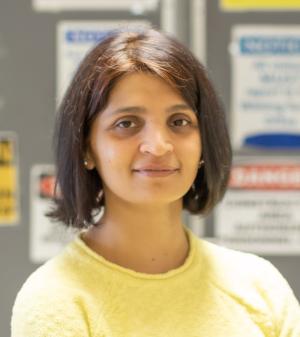
CREDIT: NEI
Ruchi Sharma
With her grant, Ruchi Sharma, a staff scientist, is forming a multidisciplinary team that will use AI and machine learning (ML) to find meaningful connections between disease-in-a-dish lab models and clinical research involving patients with AMD. “I have always loved the idea of a multidisciplinary team that brings together clinicians, big data scientists, and experts in AI and ML, and this funding opportunity has given me the chance to make that happen,” said Sharma.

CREDIT: NEI
Vineeta Das
Joanne Li is stepping outside her comfort zone as a biomedical engineer and using the grant to collaborate with Vineeta Das, a postdoctoral researcher with expertise developing AI-based image analysis methods. Together, they plan to develop a system that combines high-resolution optical coherence tomography imaging and an AI-based analysis platform to detect the earliest sign of age-related diseases.

CREDIT: NEI
Joanne Li
“By having a system that images living human eyes at the cellular level and systematically analyzes and tracks changes over time, we hope to understand how the ‘normal’ path of aging deviates in diseases such as AMD,” Li said.
“Scientists tend to stick with what they are good at,” added Herrera. “The NEI IRP grant program challenges us to think outside our area of expertise and, more importantly, gives us funding to pursue those ideas.”
Click here for more information about intramural funding opportunities.
Kathryn DeMott, a science writer at NEI, enjoys spending her spare time hiking and cooking with friends and family.
This page was last updated on Thursday, December 5, 2024
